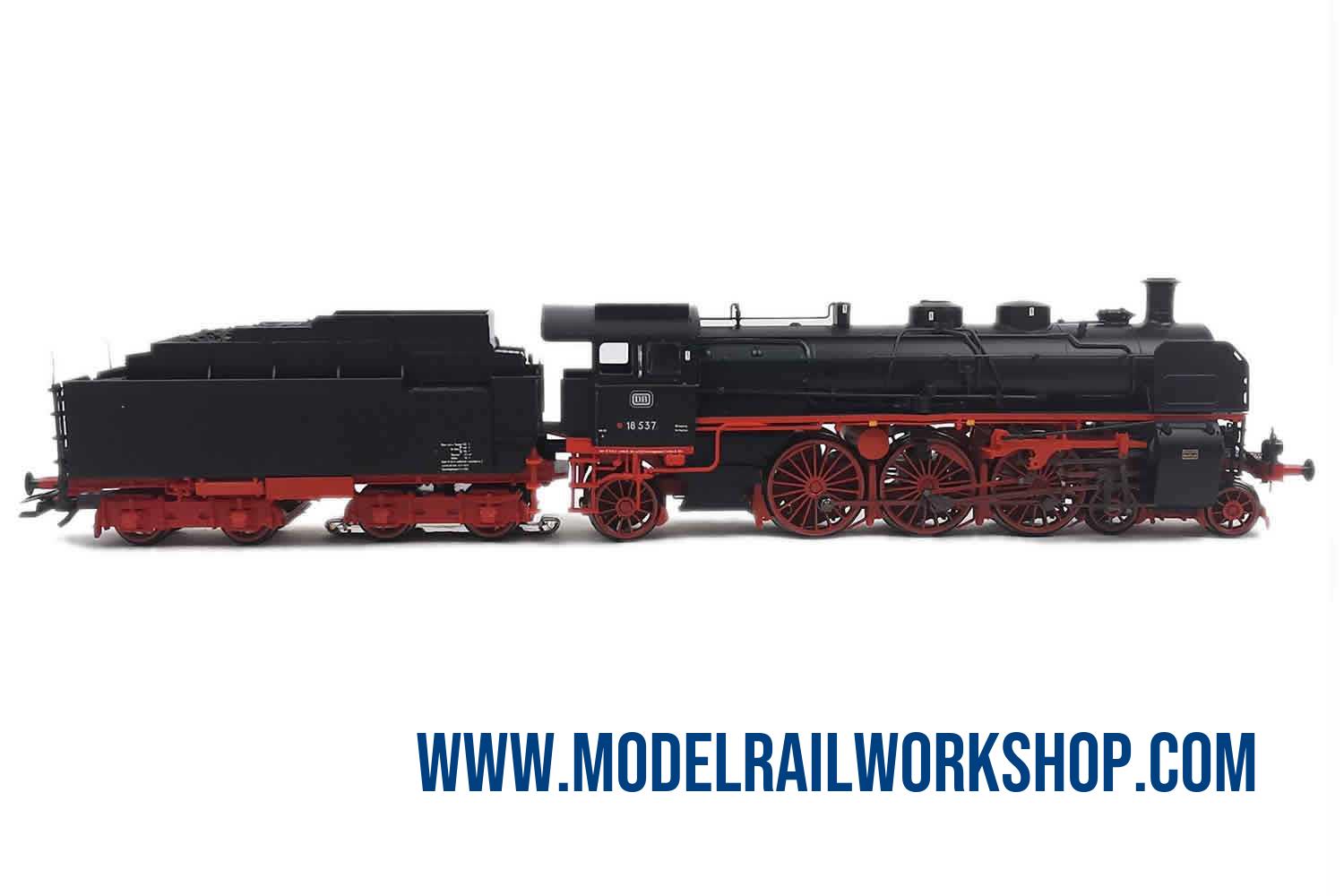
| KEY DATA | |
|---|---|
| Product Name | 39030 Steam locomtoive with tender - BR18-5 (Bay.S3/6) |
| Object type | Locomotive-Steam with tender |
| Product Line | Märklin MHI |
| Era | 1945-1970 (III) |
| Manufactured years | 2014-2016 |
| Text on object | DB |
| Number on object | 18 537 |
| Classification | BR 18-5 |
| Type of housing | Metal |
| Length | 26.5 cm |
| Technology | Digital MFX+ |
| Railway company | DE-DB |
| Märklin RRP (Year) | 450€ (2015) |
| Koll valuation (Year) | 230€ (2022) |
| Url to Märklin | Klick to GoTo www.maerklin.de |
| Description | |
|---|---|